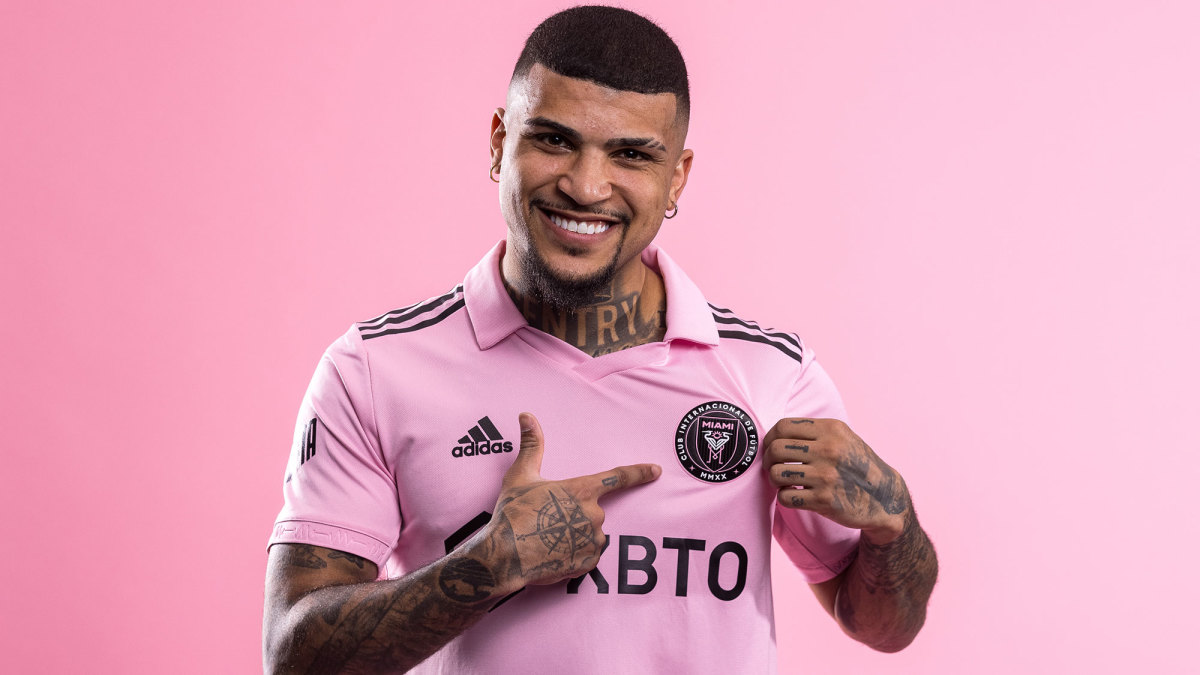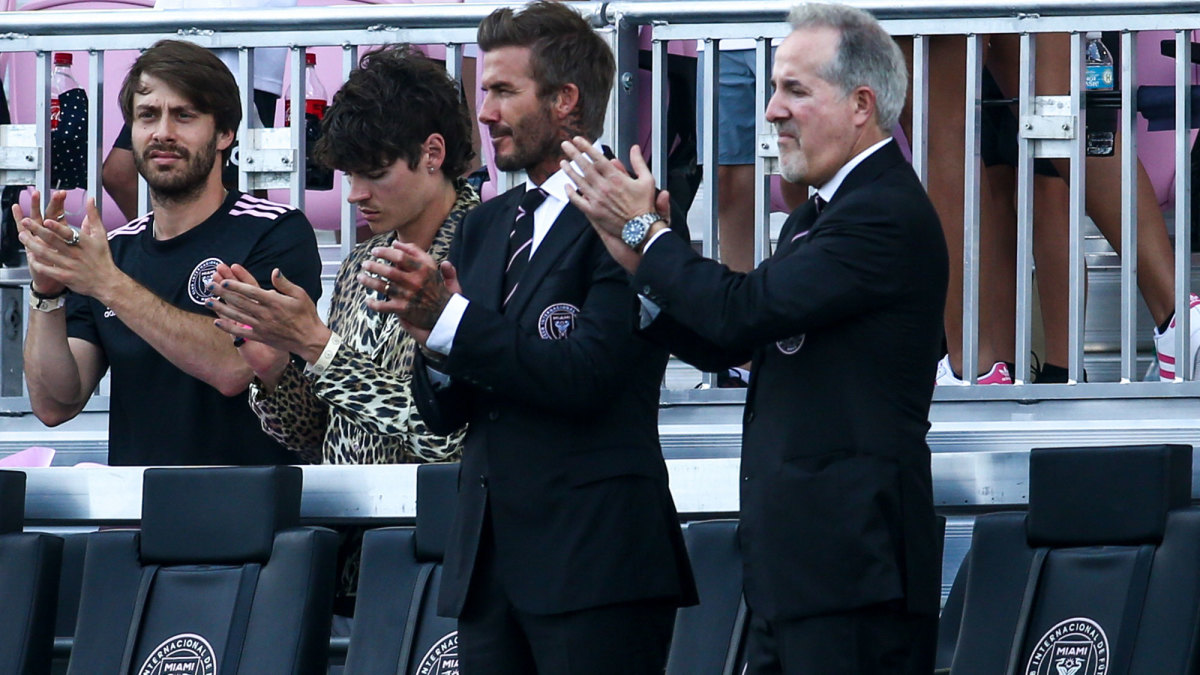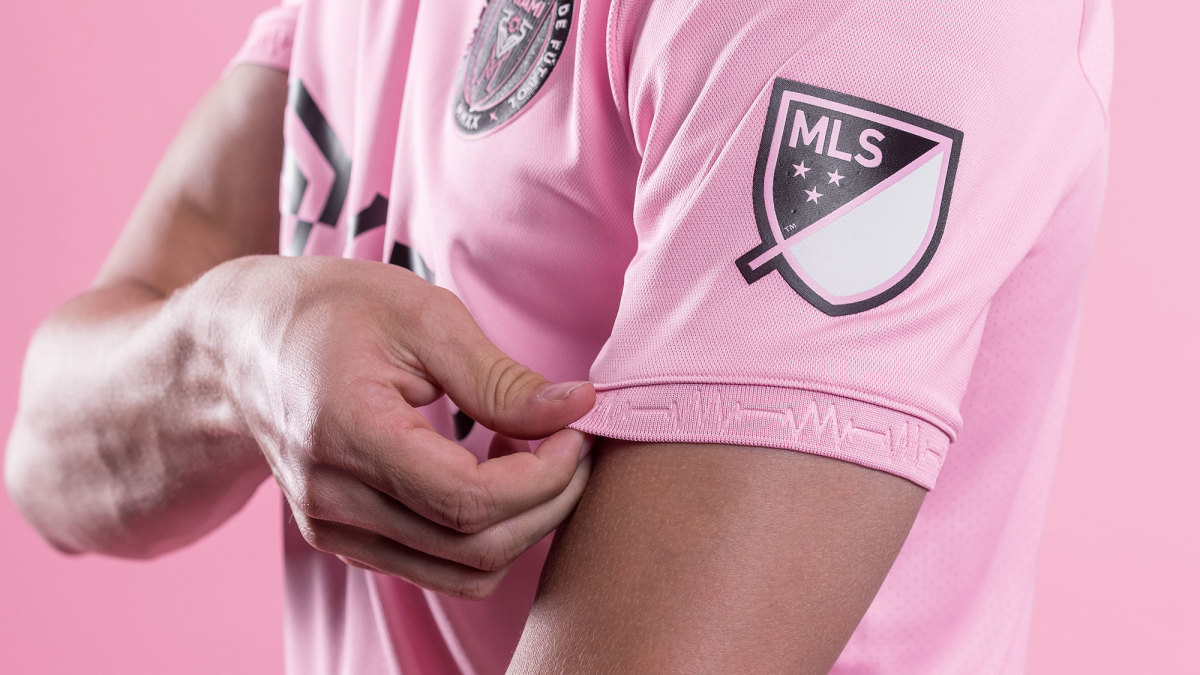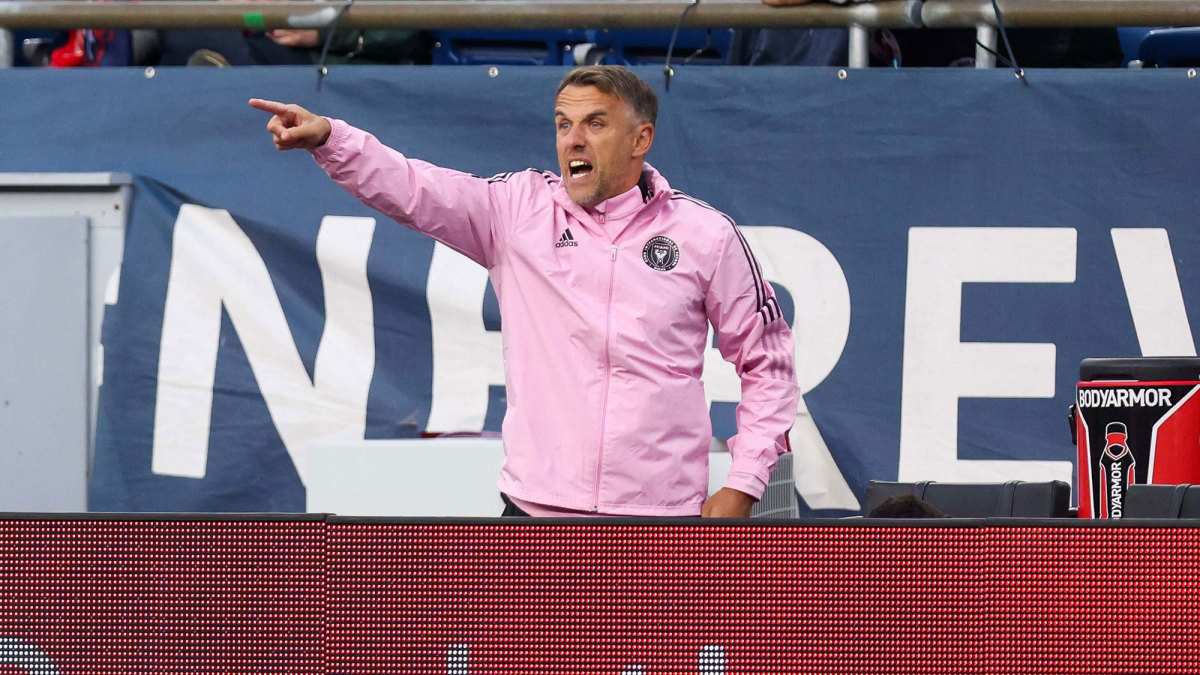The Power of Pink: What Inter Miami's New Kit Represents for the Club

In a way, and despite the look’s exhausting proliferation throughout the league, the white and black uniforms worn by Inter Miami during its first two MLS seasons were appropriate for a club that failed to live up to its early promise. For a while now, Inter’s brand has been delayed gratification.
It took six years for club founder David Beckham to arrange an ownership group, find a place to play and put a team on the field. That field wasn’t inside a brand-new, state-of-the-art soccer palace in Miami, but in an interim modular facility around 30 miles north in Ft. Lauderdale. And that team, absent the kind of blockbuster signings many expected Beckham to attract, wasn’t very good. Inter is 19-31-8 so far. Its original head coach and sporting director, Diego Alonso and Paul McDonough, are already gone. The latter remains suspended by MLS following a 2021 investigation into Inter’s breach of league roster rules, which ultimately resulted in more than $2 million in fines and a steep cut to the club’s 2022-23 salary budget.
So much more was expected. And the discrepancy between possibility and reality was symbolized, in part, by color. Inter unveiled an eye-catching logo in 2018 that popped with pink, and early marketing materials leaned heavily into that uncommon sporting hue. The club draped the front page of the Miami Herald with a bright pink ad. It all seemed to set the stage for one of the most distinctive uniforms in sports, one that would reflect Miami’s unique setting, culture and glitz (not to mention its fashionable owner). Instead, there was MLS standard-issue black and white. It was all such a letdown.
But Inter Miami is kickstarting a new era on Saturday, one the organization hopes will be a rose-colored reset reminiscent of a South Florida sunrise. The MLS team, under the guidance of coach Phil Neville and sporting director Chris Henderson, features more than a dozen new players, including U.S. national team defender DeAndre Yedlin.

“We feel as an organization we’re in a miles better place to reach the goals and achieve the things that we want to do, and create a culture like we want to do, as an organization,” Neville said this week.
And they’ll be doing it in pink. Inter unveiled its new, long-awaited pink jersey on Saturday morning, thus becoming the only major American pro or college team to truly showcase the color. The bright, collared shirt—dubbed the “Heartbeat Kit” thanks to a subtle, M-shaped EKG graphic on the cuffs—will be paired with pink shorts and socks, creating a uniform that, while one of many monochrome offerings in MLS, still stands out dramatically. The secondary all-black set will carry over from last season, but the club is committed to playing in pink as much as possible.
“The good news is when you turn on the TV and see us in pink, you’ll know it’s us,” Inter senior VP-brand and marketing Mike Ridley said. “If you’re going to own it, own it. I think all-pink is going to be very striking and you’re not going to miss us, that’s for sure.”
Miami fans have yearned for pink since day one. Ridley told Sports Illustrated that club surveys, marketing and sales data were clear. The pink smoke that emanates from DRV PNK Stadium’s north stand represents additional organic evidence. And Beckham and majority owner Jorge Mas wanted pink as well.

So why the two-year wait? Because, fittingly, it’s taken time for everything to finally come together. Inter wanted to use its own, bespoke shade of rich pink—not hot or pale—and Adidas wasn’t able to reproduce the original color in time for the 2020 season. The light pink shorts Inter wore on a couple of occasions that year appeared white on the field. Meanwhile, the league’s two-year kit cycle meant the club had to wait until 2022 for a new light-colored kit. Ridley, who’s been at Inter since January 2020, started working with colleagues on the new pink uniform a couple months later. They saw the final product in December 2021 and teased its unveiling with “It’s Pink” billboards in South Florida. This time, the club would deliver.
“It was always very clear that Jorge and David had said they wanted a pink jersey. But they wanted our pink … so this was actually the first opportunity to bring our pink jersey, our pink, to the field.” Ridley explained.
“It took two years to bring it to market, which I understand can be frustrating. But I think it’s a credit to our ownership and to the fans that we’re going to get there. We’re going to own the pink now,” continued Ridley, a former Cayman Islands international who’s an avid jersey collector. “It is symbolic. This is our first pink jersey, and we’re going to go all-pink and it’s a fresh season. The magic with any football jersey is when you get the new jersey, everything is possible again. So with the Heartbeat Kit, everything is possible again.”
The club is prepared for significant national and global interest in the kit, which also features a small duplicate of a tattoo on Beckham's chest: the slogan "Libertad Para Soñar," which means "Freedom to dream." Thanks to Beckham and Miami’s reputation and renown, Inter almost certainly will become the most high-profile pink team in the world. Pink is exceedingly rare in sports, and in the U.S. it’s seen primarily during breast cancer awareness campaigns. Typically absent from flags and traditional heraldry, pink was an uncommon organizational identifier even before some associated it with gender. So it just never really transitioned to athletics.

The soccer team most frequently associated with the color, Palermo, is languishing in Italy’s Serie C. Others, like Japan’s Cerezo Osaka, Peru’s Sport Boys and Bermuda’s national teams, aren’t well-known outside their homelands. Pink has been featured on away or alternate kits by the likes of Barcelona, Real Madrid, Everton, Leicester City and Juventus (where it was an original club color), but never for long. And it was never their brand.
Beyond charities and brief campaigns, holidays or promotions, pink is a rarity in American sports. Penn State, Syracuse and North Dakota identified with the color in the 1800s, and the Nittany Lions now wear it occasionally as a throwback. It’s popped up a bit in U.S. soccer, notably with USL League One side Forward Madison, which uses pink as a secondary hue. The Portland Timbers just released a pale pink away jersey adorned with roses, and St. Louis City, which enters MLS next year, features a reddish hot pink in its logo.
But Miami was always the most likely home of the first American team to go all-in on pink. The art deco architecture and design, the flamingos, the sunsets, Sonny Crockett’s outfits in Miami Vice—it’s the first American city almost anyone would associate with the color. The Miami Heat have worn pink alternates before, and now Inter is taking the next step.

“It’s ingrained in Miami. It would be difficult for some other teams to try and own pink, you know? Pink is Miami, and it makes sense for us to do it,” Ridley said.
Pink is Miami, and after two years, pink represents Inter’s chance to realize its potential. It’s a statement. It reflects a key moment of transition, and the club’s willingness to address prior shortcomings and make bold moves. That was evident when Neville addressed Miami’s squad overhaul this week.
"We [developed] a real understanding of what it takes to be successful in this league, and we had to take a risk. Me and Chris knew that well into the [2021] season, we knew that we had to make real big changes,” Neville said. “We had to send a strong, strong statement. Why? Because the first two years for this franchise wasn’t good enough—wasn’t good enough. Wasn’t acceptable from the top, down to the very bottom. So we had to make major changes to get at what we wanted. … So it was a great learning experience last year, even in the times when we went [multiple games] without a victory, I always knew where we wanted to take the team.”
More Soccer Coverage:
